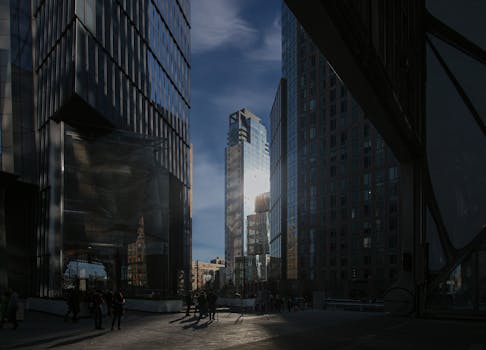
Urban Green Spaces: The Future of Outdoor Living in European Cities by 2025
Urban Green Spaces are becoming increasingly important in European cities, and by 2025, they will be a crucial component of urban planning. These spaces not only provide a peaceful escape from the hustle and bustle of city life but also offer numerous benefits for residents and the environment. In this article, we will explore the importance of urban green spaces, their benefits, and how they will shape the future of outdoor living in European cities.
What are Urban Green Spaces?
Urban green spaces refer to areas of land in urban environments that are covered with vegetation, such as parks, gardens, and green roofs. These spaces can be found in various forms, from small pocket parks to large urban forests. They provide a range of ecosystem services, including air purification, climate regulation, and habitat creation for wildlife.
Benefits of Urban Green Spaces
Urban green spaces offer numerous benefits for residents and the environment. Some of the most significant advantages include:
- Improved Air Quality: Urban green spaces help to purify the air by absorbing pollutants and releasing oxygen.
- Climate Regulation: Green spaces can mitigate the urban heat island effect, reducing the temperature in cities and improving comfort for residents.
- Mental Health Benefits: Spending time in nature has been shown to reduce stress, anxiety, and depression, improving overall mental health and well-being.
- Increased Biodiversity: Urban green spaces provide habitat for wildlife, supporting local biodiversity and ecosystem health.
- Recreation and Leisure: Green spaces offer opportunities for physical activity, socialization, and relaxation, improving overall quality of life for residents.
Future of Urban Green Spaces in European Cities
By 2025, urban green spaces will become an integral part of urban planning in European cities. Cities will prioritize the creation and maintenance of these spaces, recognizing their importance for sustainability, public health, and environmental protection. Some of the trends that will shape the future of urban green spaces include:
- Green Infrastructure: Cities will invest in green infrastructure, such as green roofs, walls, and urban forests, to manage stormwater runoff, reduce urban heat islands, and improve air quality.
- Community Engagement: Residents will be involved in the planning and maintenance of urban green spaces, ensuring that these areas meet community needs and promote social cohesion.
- Innovative Design: Urban green spaces will be designed with innovative and sustainable features, such as rain gardens, green streets, and urban wetlands, to manage stormwater runoff and improve biodiversity.
- Integration with Transportation: Urban green spaces will be integrated with transportation systems, such as bike lanes, pedestrian paths, and public transportation hubs, to promote sustainable transportation and reduce air pollution.
Case Studies: Successful Urban Green Space Initiatives in European Cities
Several European cities have already implemented successful urban green space initiatives, demonstrating the potential for these spaces to transform urban environments. Some examples include:
- Barcelona’s Superblocks: Barcelona has implemented a superblock program, which involves converting city streets into pedestrian-friendly green spaces, reducing traffic congestion and improving air quality.
- Copenhagen’s Green Roofs: Copenhagen has implemented a green roof initiative, which involves installing green roofs on buildings to reduce stormwater runoff and improve biodiversity.
- Amsterdam’s Park System: Amsterdam has developed a comprehensive park system, which includes a range of urban green spaces, from small pocket parks to large urban forests, providing residents with access to nature and recreation opportunities.
Conclusion
Urban green spaces are the future of outdoor living in European cities. By 2025, these spaces will become an integral part of urban planning, promoting sustainability, public health, and environmental protection. As cities continue to grow and develop, it is essential to prioritize the creation and maintenance of urban green spaces, ensuring that residents have access to nature, recreation, and relaxation. By investing in green infrastructure, community engagement, and innovative design, European cities can create thriving, sustainable environments that improve the quality of life for citizens and support a healthy, resilient future.


